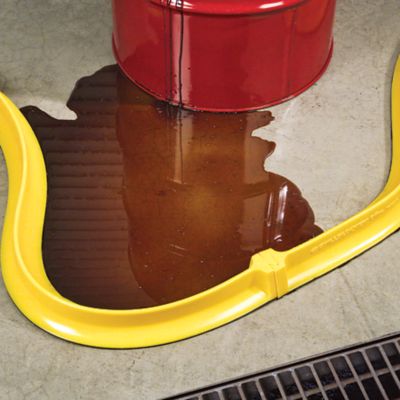Testing the waters Spills of an unknown nature can make responders anxious. Determining exactly what has spilled is critical for choosing the proper
 Testing the waters
Testing the waters
Spills of an unknown nature can make responders anxious. Determining exactly what has spilled is critical for choosing the proper personal protective equipment (PPE). It also helps responders select specialised instruments, tools and other equipment that may be necessary.
If the identity or nature of a spill cannot be determined, responders must assume the worst. This often results in the use of more costly and cumbersome PPE, as well as delayed response.
In the zone
When spills present dangers such as explosion or inhalation hazards, correctly identifying spilled materials helps establish proper isolation or work zones to protect both responders and the public. Air monitoring equipment is sometimes used to help establish these zones.
Even if a spill is more of a nuisance than a safety hazard, establishing zones helps maintain site security and keep untrained persons safely out of spilled materials so that responders can respond more efficiently.
Surround and conquer
With responders properly protected and the area around the spill secured, the actual work of spill response can begin. Creating a physical barrier around spilled liquid helps limit the overall area affected and requiring cleaning and restoration.
Spill response kits — containers of absorbents, PPE, tools and other supplies — are a convenient way to help ensure that adequate response materials are available. These kits can be positioned throughout a facility in spill-prone areas, and stocked with items most likely to be needed in that area.
Absorbent dikes or booms are often included in spill response kits. These are ideal for containing and absorbing smaller spills. Non-absorbent dikes are better for larger spills and in areas where special efforts should be taken to block access to floor or storm drains and other environmentally sensitive areas.
The heart of the problem
With the spill surrounded, the next step in response is to find and eliminate the source of the spill. If the source is a drum that has been punctured with a forklift, this can be as simple as rolling the drum so that the hole is on the top.
Faulty valves, ruptured pipelines and holes in flexible hoses are other common sources of leaks and spills. Response can be accelerated by clearly marking shut-off valves, keeping them unobstructed, and training responders on their locations. It also saves responders valuable time to stock spill kits with commonly used tools, such as non-sparking wrenches.
In the trenches
After the spill has been contained and the source stopped, actual cleanup can begin. Unless something inside the spill area needs to be removed or protected from further damage, it’s best to start from the outside of the spill and work toward the centre.
Absorbent mats, pillows and socks can be used to soak up spilled liquids. Be sure to verify the chemical compatibility of the absorbents being used. Some absorbents contain cellulose, which should not be used with spills of corrosive materials.
If purity of material is not an issue, spills can also be vacuumed to recover liquid for reuse. For flammable or corrosive materials, be sure to verify that the vacuum is compatible. Standard wet/dry vacuums are often not suitable for these types of liquids.
Complete spill cleanup also involves collecting all spent materials used to combat the spill. Absorbents assume the characteristics of the liquids that they absorb and should be handled accordingly. This also applies to disposable PPE, tools and other items that are not going to be reused.
Rub-a-dub-dub
Final cleanup also involves restoring or cleaning the spill area, tools and responders.
Decontamination lines should be established and ready to function when a response is initiated. This is especially important if there are victims in the spill area who will need to be decontaminated prior to medical triage or treatment.
Drills should incorporate decontamination procedures so that everyone is familiar with the process. Include both wet and dry decontamination methods to help determine which is more practical for given scenarios.
Always ready
Selecting and storing proper PPE, absorbents and other response equipment takes time, space and money. But having the materials on hand can mean the difference between a minor incident and a major catastrophe.
However, it’s not enough to simply stock supplies. Train responders to use the materials provided, and allow time for them to have regular drills so that they will be ready to respond.
These practices will help ensure that responders can safely perform their duties, and that the effects of a spill will be minimised.
Find out More
New Pig provides a comprehensive range of Spill Kits and Spill & Drain Barriers from our online shop www.newpig.com.uk. Or why not give us a call on 0800 919 900.






COMMENTS